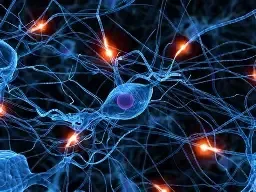
Is This Normal… or Nerve Damage?

Is This Normal… or Nerve Damage?
What Those Weird Sensations Could Be Trying to Tell You
We’ve all had those weird sensations—tingling fingers, a leg that falls asleep, a strange burning patch on the skin. Most of the time, it’s nothing… right?
But what if it keeps happening? What if that numbness isn’t just from sitting funny? What if that stabbing pain in your foot comes out of nowhere and never quite leaves?
At some point, we all ask the same question:
“Is this normal… or is it something more serious?”
Let’s talk about how to know when it’s time to stop brushing off those symptoms—and when it might actually be nerve damage.
What Is Nerve Damage, Anyway?
Your nervous system is the communication highway between your brain and body. Every movement you make, every sensation you feel—yep, that’s your nerves talking.
But when those nerves get damaged, the signals start to get jumbled. It’s like trying to text on a cracked phone screen—what you mean to send and what shows up don’t always match.
Nerve damage, also known as neuropathy, can affect:
Sensory nerves (what you feel)
Motor nerves (how you move)
Autonomic nerves (automatic body functions like digestion or blood pressure)
Common Warning Signs of Nerve Damage
So, how do you know if what you’re feeling is “just getting older” or something more serious? Here are red flags that may indicate nerve trouble:
🧠 Numbness or Tingling
It’s one thing when your foot falls asleep—briefly. But if that “pins and needles” feeling becomes frequent or long-lasting, it’s worth getting checked.
🔥 Burning or Shocking Pain
Some people describe nerve pain as burning, stabbing, or like an electric shock. If your pain doesn’t match a recent injury, nerves might be involved.
🪫 Muscle Weakness or Instability
Trouble gripping objects, climbing stairs, or standing for long periods could mean the motor nerves aren’t doing their job.
🧊 Loss of Temperature Sensation
If you can’t feel hot or cold like you used to, it might not be your imagination. Sensory nerves could be impaired.
💤 Symptoms Worse at Night
Many patients with neuropathy report their symptoms ramp up when they’re trying to sleep. If nighttime brings weird sensations or pain, don’t ignore it.
Why Early Detection Matters
Nerve damage is progressive. That means the longer it goes untreated, the more function you can lose.
But there’s good news: Nerves can regenerate, if caught early enough and given the right support.
At Renew Life Wellness Centers, we specialize in pinpointing the root causes of nerve dysfunction and creating custom treatment plans to help reverse the damage, restore function, and relieve symptoms—without relying on pain pills or surgeries.
Neuropathy Relief Tips You Can Start Today
Want to protect your nerves—or support your healing? Try these:
Fuel Your Body – Get plenty of B vitamins, omega-3s, and protein to support nerve health.
Hydrate Daily – Water helps conduct electrical signals in the body.
Watch Blood Sugar – Even “borderline” blood sugar issues can trigger nerve breakdown.
Move Gently – Walking, stretching, and vibration therapy promote circulation.
Get Evaluated Early – Don’t wait for symptoms to get worse.
Final Thoughts
Your body is smart. It’s always trying to tell you when something’s wrong.
If you’re experiencing odd sensations, lingering numbness, or unexplained weakness, don’t ignore it.
Because while you might think:
“It’s probably nothing…”
Your nerves might be quietly saying:
“Please help.”
Schedule Your Appointment Today!
📚 References:
Callaghan, Brian C., et al. "Diabetic neuropathy: clinical manifestations and current treatments." The Lancet Neurology, vol. 11, no. 6, 2012, pp. 521–534.
England, John D., et al. "Practice parameter: evaluation of distal symmetric polyneuropathy: role of laboratory and genetic testing (an evidence-based review)." Neurology, vol. 72, no. 2, 2009, pp. 185–192.
Hanewinckel, Rick, et al. "Peripheral neuropathies: epidemiology and classification." Journal of the Neurological Sciences, vol. 362, 2016, pp. 13–16.
Zochodne, Douglas W. Neurobiology of Peripheral Nerve Regeneration. Cambridge University Press, 2008.
Said, Guillaume. "Diabetic neuropathy—a review." Nature Clinical Practice Neurology, vol. 3, no. 6, 2007, pp. 331–340.
